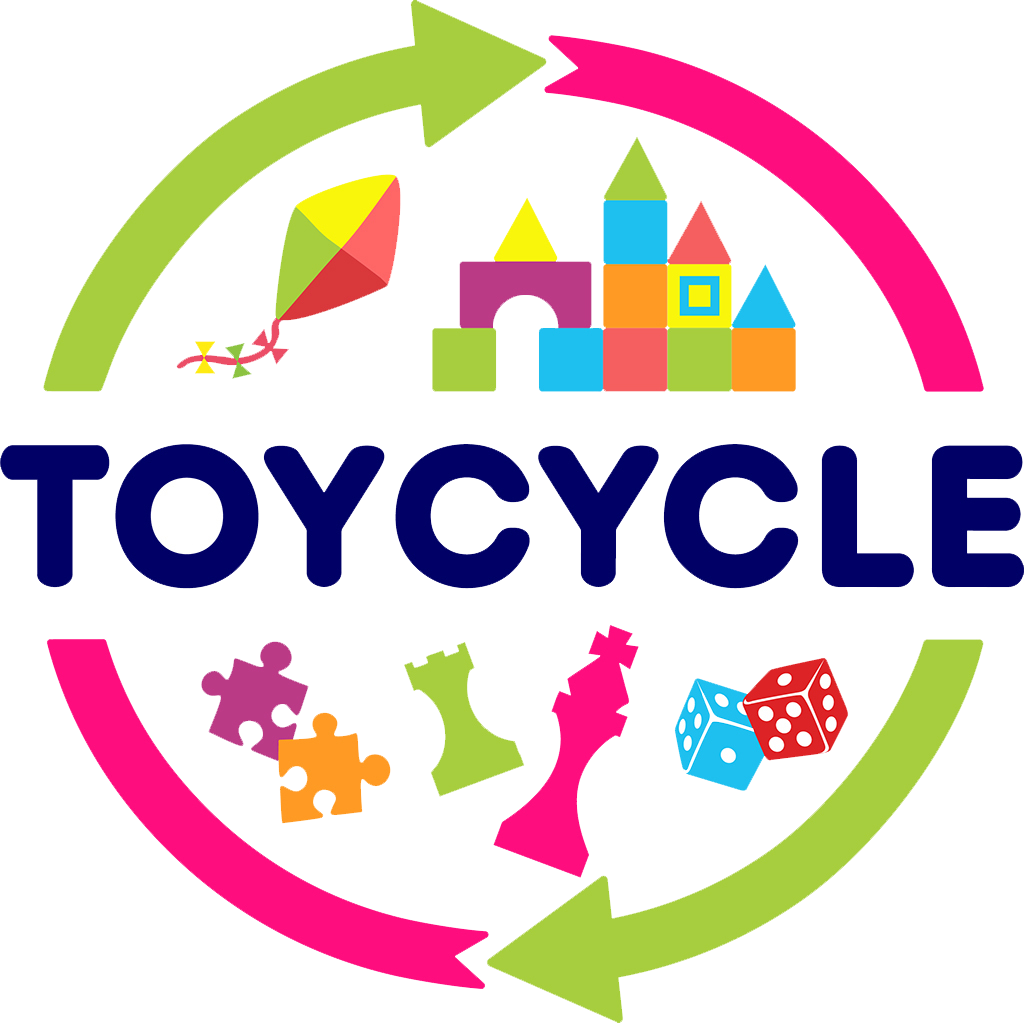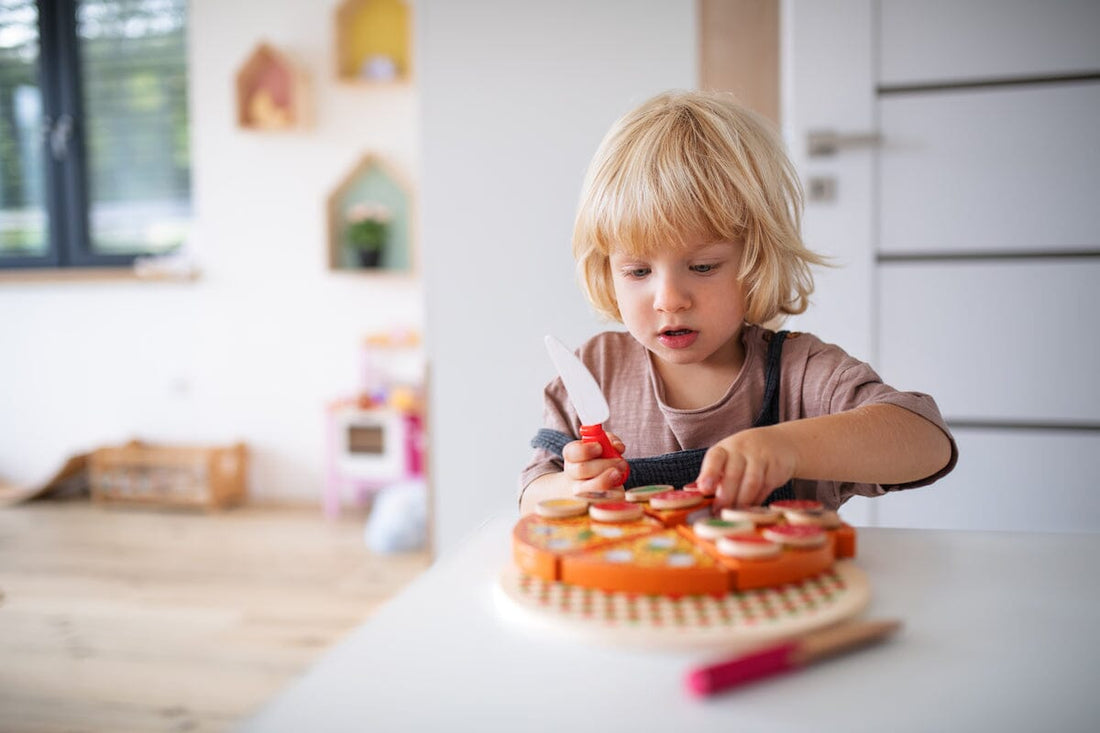Have you ever noticed your child designing a car out of rocks? Or does he talk to his toys as if they were human beings? Well, that’s common for children and highly encouraged as a form of pretend play.
Generally, children engage in imaginative play from a young age, so it’s only right that you understand its benefits. What’s more, we’ll help you select the right pretend play toys for your little ones.
But first,
What is Pretend Play?
Pretend play or imaginative play for toddlers involves role-playing and symbolic gestures. Generally, children use objects and actions to imitate or represent other symbolic objects or people.
For example, kids will use pretend play toys like cooking sets to adapt to the role of a chef. The kids use their imaginative skills to dress up, talk, and act like chefs.

At What Age Do Children Engage in Pretend Play?
Children generally begin to engage in pretend play around 2-3 years old. At age 2, your child’s creativity and imaginative skills are more developed, and they can adapt to different behavior.
However, some toddlers will start to lean into pretend play earlier, between 12-14 months. The age kids get started depends primarily on the child's exposure to pretend play toys and social interactions.
The Importance of Pretend Play
Pretend, or imaginative play, is the first play your toddlers will learn. That's good news because this play contributes significantly to your toddler's all-around development. Below are a few significant benefits of encouraging pretend play for toddlers.
- It Improves their Language Skills
If you're keen, you'll notice your toddler speaking to themselves often during pretend play. They'll talk to their dolls, imitate your actions, or adopt a new character for the game.
In fact, you'll hear new words and full sentences that they probably picked up from your conversations or their favourite cartoon character.
Through these actions, your toddler improves their communication skills and builds vocabulary. Moreover, they’ll understand the significance of language in communicating their needs and thoughts.
- It Encourages Socio-Emotional Development
During pretend play, the toddlers will learn the role of social and emotional skills in everyday life. For example, they learn how to take turns in a conversation or activity and the importance of sharing.
Additionally, as the child grows, they'll adopt creative problem-solving skills that contribute to strong relationships later in life.
It’s safe to say that pretend play for toddlers builds self-esteem because their confidence grows as they learn to communicate and solve problems.
In addition, toddlers will develop a sense of self-awareness and learn to control their emotions. PlanToys is a great choice for pretend play.
PlanToys Green Dollhouse with Furniture
- It Nurtures Creativity
Pretend play nurtures toddlers' creativity and improves their thinking skills or imagination. In addition, the imaginative play toys encourage the kids to use their memory and devise ways to solve problems.
In short, your toddler will call upon his cognitive thinking abilities, whether talking to his spiderman action figure or using the pretend play kitchen set to cook a meal.
As they grow, you’ll be proud of your child’s ability to think for themselves and appreciate different points of view.
- It Intensifies Physical Development
Typically, pretend play involves role-playing and non-literal actions. But that's not all; your toddlers will benefit greatly through physical development.
Kids get physical when they move around with their pretend play toys or re-enact scenes, like climbing trees or chasing after cars like the police.
These physical activities enhance their fine and gross motor skills, which are crucial for early childhood development. As a result, the kids become stronger and advance to more complex physical developments sooner.

Examples of Pretend Play Ideas
- Stuffed Animal Care
Kids love stuffed animals and cute dolls. In fact, once a toddler identifies their favourite stuffed animal, that automatically becomes their best friend. So, encourage your toddler to build a space for their stuffed animals and care for them.
For example, they’ll feed the animals, clean their room, dress them, and read to them. It’s a fun activity that improves language and teaches responsibility.
- Restaurant Fun
If your kids love spending time in the kitchen, this activity will be perfect. Find a simple kitchen set for toddlers and help them set up their restaurant.
Toycycle features realistic pretend play sets, including this PlanToys Stand Mixer Set that will fit into your restaurant setting.
Once you have the setup, ask them to create menus, design uniforms, and write grocery lists. What’s more, they will also take orders, serve guests, and collect payments.
It's a fun game, and you should also double up as a restaurant guest so they have an audience. Alternatively, the dolls and stuffed animals can join the party.
- Laundry Day
Yep! Kids enjoy water play, so why not add a twist through pretend play? For this activity, you’ll need a laundry set, including tiny basins, buckets, and detergents. The kids will pretend to wash their or their dolls' outfits.
- Fire Fighter to the Rescue
Firefighters are superheroes, and kids love a good superhero. So, turn the kids into little firefighters and encourage them to put out fake fires for this activity. You can either build a DIY fire truck or buy imaginative play toys like PlanToys Fire Fighter Set.
How to Encourage Pretend Play for Toddlers
- Use realistic imaginative play toys to make pretend play more exciting. The kids will look forward to restaurant and laundry games when they have a great setup.
- Allow your kids to lead the way. Pretend play is more productive when the kids control the activities and implement their creative ideas. If you must oversee, do it from a distance or give simple safety instructions before they start playing.
- Pretend play accommodates structured and unstructured play. Therefore, set up activities that rotate between both types of play to encourage more interaction from the kids. In addition, include pretend play activities that encourage solo and social play.
- Join in the fun and feed the fantasy to make the activity more exciting when the kids play. For example, for firefighters, ask them how they intend to save the victims and pretend that you're stuck. Then, ask them to put out the fire and cough to make it more realistic. That's fun, and it improves their language and problem-solving skills.
There you go! Pretend play contributes greatly to your child's development and is definitely encouraged. Furthermore, you'll have more time on your hands once you introduce your toddler to exciting, imaginative play toys.
So what are you waiting for? Check out Toycycle for the best pretend play sets for your toddlers.


